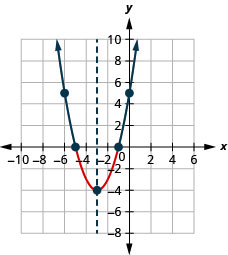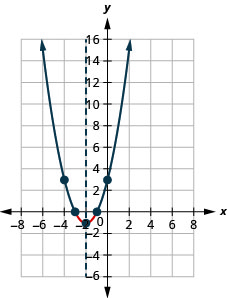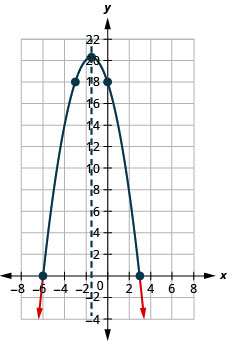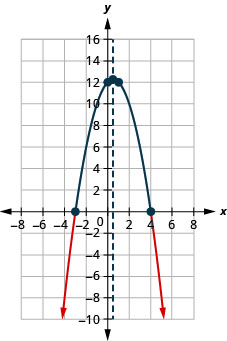9.9E: Ejercicios
( \newcommand{\kernel}{\mathrm{null}\,}\)
La práctica hace la perfección
En los siguientes ejercicios,
- Resolver gráficamente
- Escribir la solución en notación de intervalos
- x2+6x+5>0
- x2+4x−12<0
- x2+4x+3≤0
- x2−6x+8≥0
- −x2−3x+18≤0
- −x2+2x+24<0
- −x2+x+12≥0
- −x2+2x+15>0
- Contestar
-
1.

Figura 9.8.16- (−∞,−5)∪(−1,∞)
3.

Figura 9.8.17- [−3,−1]
5.

Figura 9.8.18- (−∞,−6]∪[3,∞)
7.

Figura 9.8.19- [−3,4]
En los siguientes ejercicios, resolver cada desigualdad algebraicamente y escribir cualquier solución en notación de intervalos.
- x2+3x−4≥0
- x2+x−6≤0
- x2−7x+10<0
- x2−4x+3>0
- x2+8x>−15
- x2+8x<−12
- x2−4x+2≤0
- −x2+8x−11<0
- x2−10x>−19
- x2+6x<−3
- −6x2+19x−10≥0
- −3x2−4x+4≤0
- −2x2+7x+4≥0
- 2x2+5x−12>0
- x2+3x+5>0
- x2−3x+6≤0
- −x2+x−7>0
- −x2−4x−5<0
- −2x2+8x−10<0
- −x2+2x−7≥0
- Contestar
-
1. (−∞,−4]∪[1,∞)
3. (2,5)
5. (−∞,−5)∪(−3,∞)
7. [2−√2,2+√2]
9. (−∞,5−√6)∪(5+√6,∞)
11. (−∞,−52]∪[−23,∞)
13. [−12,4]
15. (−∞,∞)
17. sin solución
19. (−∞,∞)
- Explicar los puntos críticos y cómo se utilizan para resolver las desigualdades cuadráticas algebraicamente.
- Resuelvex2+2x≥8 tanto gráfica como algebraicamente. ¿Qué método prefieres y por qué?
- Describir gráficamente los pasos necesarios para resolver una desigualdad cuadrática.
- Describir los pasos necesarios para resolver una desigualdad cuadrática algebraicamente.
- Contestar
-
1. Las respuestas pueden variar.
3. Las respuestas pueden variar.
Autocomprobación
a. después de completar los ejercicios, utilice esta lista de verificación para evaluar su dominio de los objetivos de esta sección.

b. En una escala del 1 al 10, ¿cómo calificaría su dominio de esta sección a la luz de sus respuestas en la lista de verificación? ¿Cómo se puede mejorar esto?


